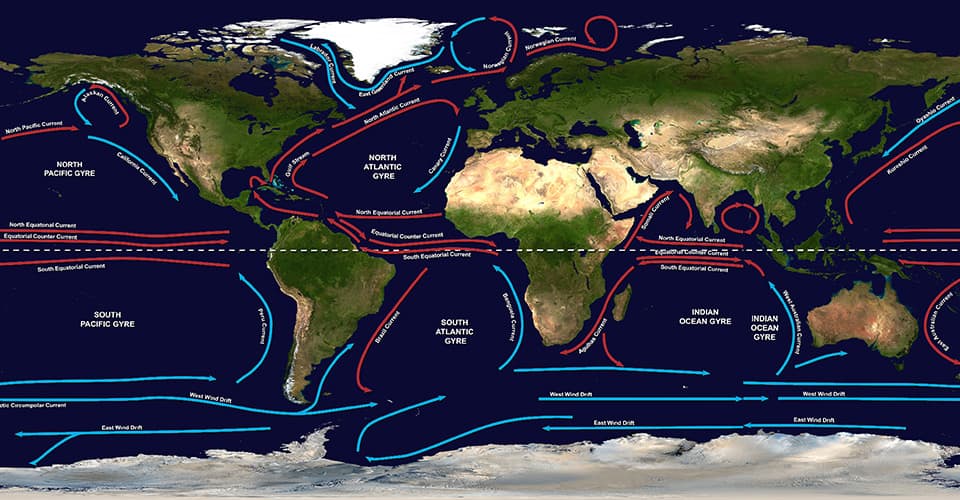What is a gyre?
A gyre is a large system of rotating ocean currents.

There are five major gyres, which are large systems of rotating ocean currents. The ocean churns up various types of currents. Together, these larger and more permanent currents make up the systems of currents known as gyres.
Wind, tides, and differences in temperature and salinity drive ocean currents. The ocean churns up different types of currents, such as eddies, whirlpools, or deep ocean currents. Larger, sustained currents—the Gulf Stream, for example—go by proper names. Taken together, these larger and more permanent currents make up the systems of currents known as gyres.
There are five major gyres: the North and South Pacific Subtropical Gyres, the North and South Atlantic Subtropical Gyres, and the Indian Ocean Subtropical Gyre.
In some instances, the term “gyre” is used to refer to the collections of plastic waste and other debris found in higher concentrations in certain parts of the ocean. While this use of "gyre" is increasingly common, the term traditionally refers simply to large, rotating ocean currents.
Search Our Facts
Did you know?
Currents don’t just move water. They move people and goods, as well as pollution and debris. To better understand how currents move people and things, NOAA collects and shares data on tides and currents. This data guides safe navigation of coastal waters, search and rescue operations, disaster clean up, and design of coastal development projects.

Get Social
More Information
Last updated: 06/16/24
Author: NOAA
How to cite this article